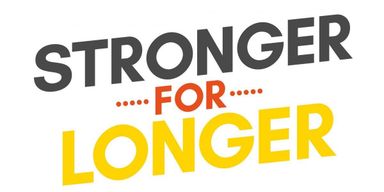10 Steps to Read Food Labels Like a Pro and Avoid the BS
You want to make healthier food choices, but let's be honest - nutrition labels can feel like a foreign language. That confusion leads to frustration, and frustration keeps you from making progress on your health goals.
Here's the good news: it doesn't have to be this way. Once you know how to read a food label, you'll never feel tricked again. You'll have the tools to make smart, confident decisions every time you shop.
In this guide, I'll walk you step-by-step through how to read nutrition labels like a pro. Let's make this the year you take control of your health and feel good about the foods you choose.

Step 1: Start with the Serving Size
Everything on a nutrition label starts with the serving size.
- Why it matters: The calories, nutrients, and daily values listed are based on this amount. If you eat double the serving size, you're eating double the calories and nutrients, too.
- Pro tip: Always compare the serving size to the amount you actually eat. That tiny half-cup serving of ice cream? You probably ate more.
(A serving size isn’t about how much you should consume - it’s a standardised portion that manufacturers choose to display nutrition information.)
Step 2: Check the Calories
Calories tell you how much energy a food will give you.
- Why it matters: If you're working on weight loss or just want to manage your energy, knowing the calorie content is essential.
- Pro tip: For snacks, look for options under 200 calories per serving to stay on track.
Step 3: Look at the Macronutrients
The "big three" nutrients - fat, carbohydrates, and protein - are your next stop.
- Fat: Look for foods low in saturated and trans fats (these raise cholesterol). Instead, choose unsaturated fats like those in nuts or avocados.
- Carbohydrates: Focus on fibre (3g or more per serving) and keep added sugars low. Fibre supports digestion, while sugar gives you empty calories.
- Protein: Protein is your powerhouse nutrient. It keeps you full and fuels your muscles.
When you balance these three macronutrients, your body gets what it needs to thrive.
Step 4: Watch Out for Added Sugars
This is where many products try to fool you. Added sugars sneak into everything from cereal to salad dressing.
- Why it matters: Too much sugar adds calories without adding nutrients, leaving you tired and hungry later.
- Pro tip: Adults and children aged 11 and over should limit their intake of free sugars (which include added sugars) to no more than 5% of total daily energy intake. This equates to approximately 30g of free sugars per day for adults (roughly 7 sugar cubes). For children, the recommended maximum varies by age: 4 to 6 years: no more than 19g (5 sugar cubes) per day. 7 to 10 years: no more than 24g (6 sugar cubes) per day. ((Scientific Advisory Committee on Nutrition (SACN))
Step 5: Understand Percent Daily Value (%DV)
The %DV is your cheat code for understanding nutrients in the big picture of your diet.
- Low %DV: 5% or less means the nutrient is low.
- High %DV: 20% or more means the nutrient is high.
- Pro tip: Look for a high %DV for fiber, vitamins, and minerals. Aim for low %DV for saturated fat, sodium, and added sugars.
Step 6: Mind the Sodium
Too much sodium can cause bloating and high blood pressure.
- Why it matters: The average person consumes more sodium than they realize. Aim for less than 2,300mg per day.
- Pro tip: Look for products with less than 140mg of sodium per serving.
Step 7: Read the Ingredients List
If the nutrition facts are the "what," the ingredient list is the "why."
- What to look for: Ingredients are listed in order of quantity, from highest to lowest. The first three ingredients matter most because they make up the bulk of the product.
- Pro tip: Look for whole foods like "oats" or "nuts" at the top. If you see sugars, refined grains, or hydrogenated oils, it's likely not healthy.
Long ingredient lists? That's often a sign of heavy processing.
Step 8: Don't Be Fooled by Misleading Claims
The front of the package is marketing, not truth. Terms like "natural," "light," or "no added sugar" can be misleading. Here's what some of these claims really mean:
- Light: Fewer calories or fat, but often more sugar.
- Natural: It doesn't mean healthy - it just means it came from something natural at some point.
- Low-fat: Often loaded with sugar to make up for the lack of fat.
Step 9: Be a Label Detective
Some products hide sugar and other unwanted ingredients under different names.
- What to look for: Sugar aliases like "cane sugar," "malt syrup," or "dextrose" can sneak into the ingredients list. If you see multiple types of sugar, the product is likely high in added sugars.
Step 10: Focus on Whole Foods
Here's the truth: the easiest way to avoid misleading labels is to choose foods that don't have labels. Fresh fruits, vegetables, lean proteins, and whole grains don't need an ingredient list because they are the ingredients.
Lorem ipsum dolor sit amet, consectetur adipiscing elit. Nulla euismod condimentum felis vitae efficitur. Sed vel dictum quam, at blandit leo.
